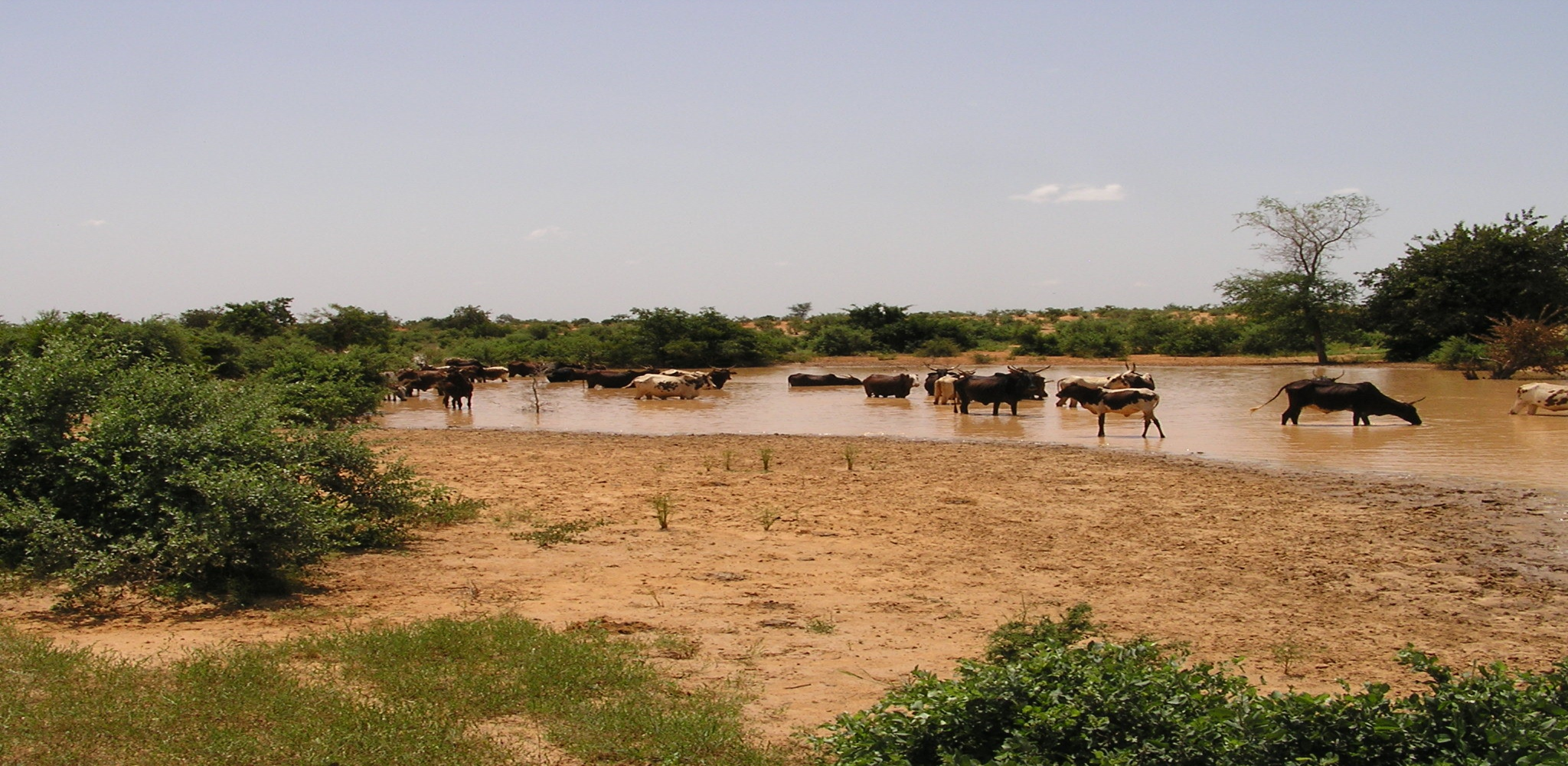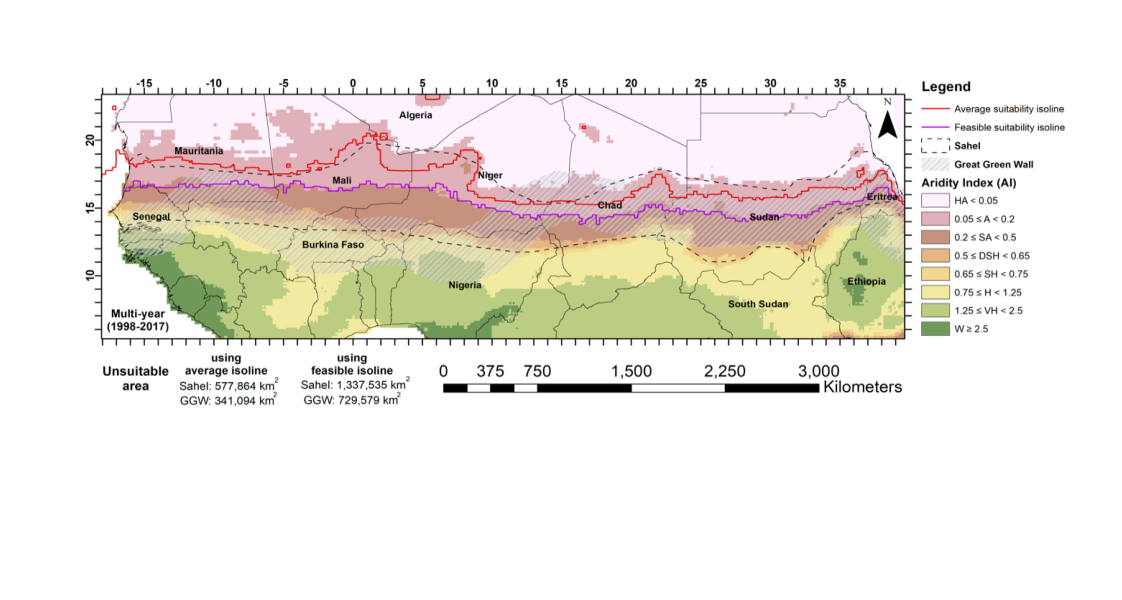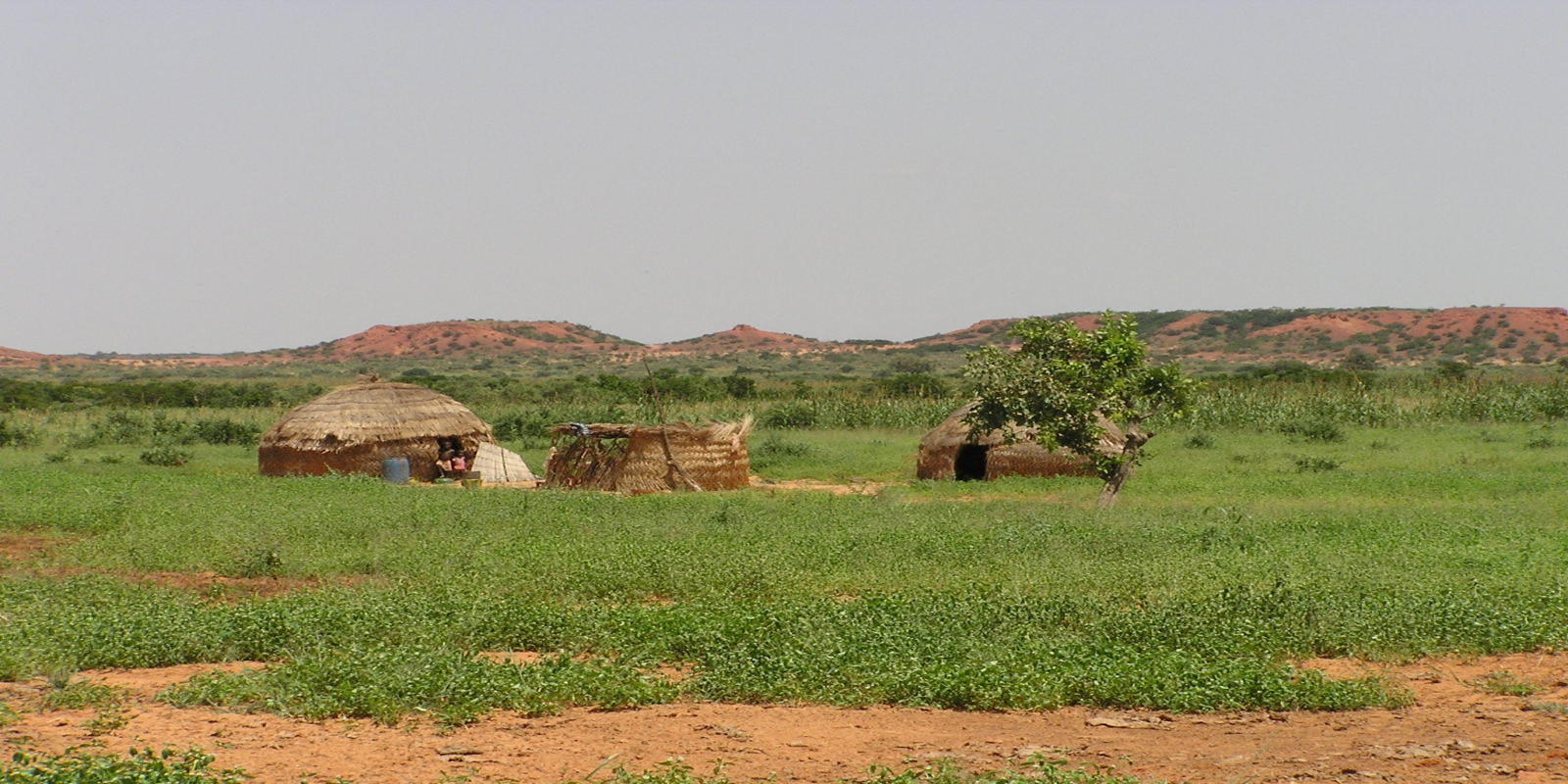Is the planned Great Green Wall in the African Sahel sustainable?
Most people in the semi-arid African Sahel with its population rely heavily on small-scale agriculture. Therefore water availability and fertility of land play important roles in achieving food security. Land use and land cover changes, land degradation, dependence on rainfed agriculture, and limited adaptive capacity of socioeconomic systems have become a concern in the region, especially post the drought years of the 1970s and 1980s. Ever since, various resilience strategies have been suggested to mitigate land degradation and the effects of climate change. One of them is ecosystem restoration through the green belt or the Great Green Wall (GGW) initiative which involves planting a more than 5000 km continuous belt of trees along the Sahel from Senegal to Djibouti.
“The key question now”, says Prof. Dr. Andreas Fink, one of the authors of a recent study on the GGW concept, “ is whether this approach is in fact sustainable”. The successful example of North China, where a GGW programme reduced the dust storm intensity and improved the vegetation condition, may not be easily transferable to the Sahel–Saharan zone. Trees with their deep roots tend to deplete soil moisture by transpiration such that native shrubs may be more effective for a GGW.
@A. Fink, KIT
In the new study, Fink and his co-authors determined the limits of vegetation and drought conditions below which greening and agricultural productivity are naturally impossible within Africa's most vulnerable regions, that is, the Sahel and the GGW regions (see Fig. 1). For the first time, the study scientifically assesses the feasibility of the zone planned for the GGW by defining a rainfed suitability threshold for potentially productive areas.
The results show that 1,337,535 km2 (43.5%) and 729,576 km2 (25.6%) of the Sahel and the proposed GGW region, respectively, are not feasible for sustainable planting, that is, under rainfed and natural land fertility conditions. About 93.0% of the impractical GGW area lies east of longitude 10°E in the central and eastern Sahel in the countries of Chad, Sudan and Eritrea.
“Thus, investing in a green belt east of this longitude is risky without supplementary irrigation and a careful selection of drought-resistant shrubs and trees” says Prof. Andreas Fink. He concludes that while the idea of a Great Green Belt is politically appealing due to its potential to strengthen collaboration of the Sahelian countries foster identity building amongst the people, a rigorous feasibility investigation of this project is mandatory to avoid its failure.
More information:
Elagib, N. A., M. Khalifa, Z. Babker, A. A. Musa, A. H. Fink, 2021: Demarcating the rainfed unproductive zones in the African Sahel and Great Green Wall regions. Land Degrad Dev., 32, 1400–1411, doi: 10.1002/ldr.3793.
Working Group: "Atmospheric Dynamics"



